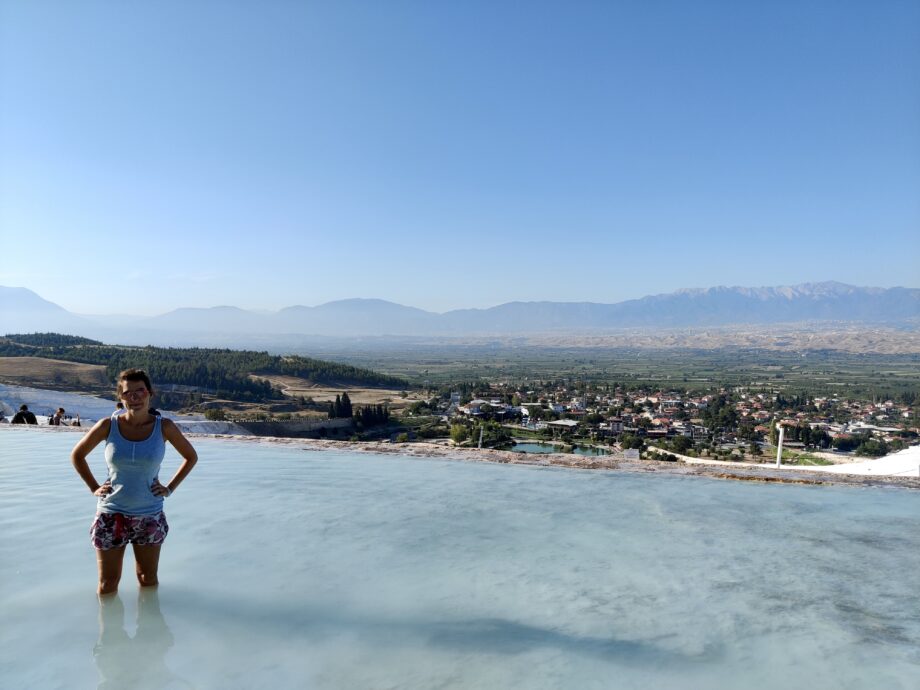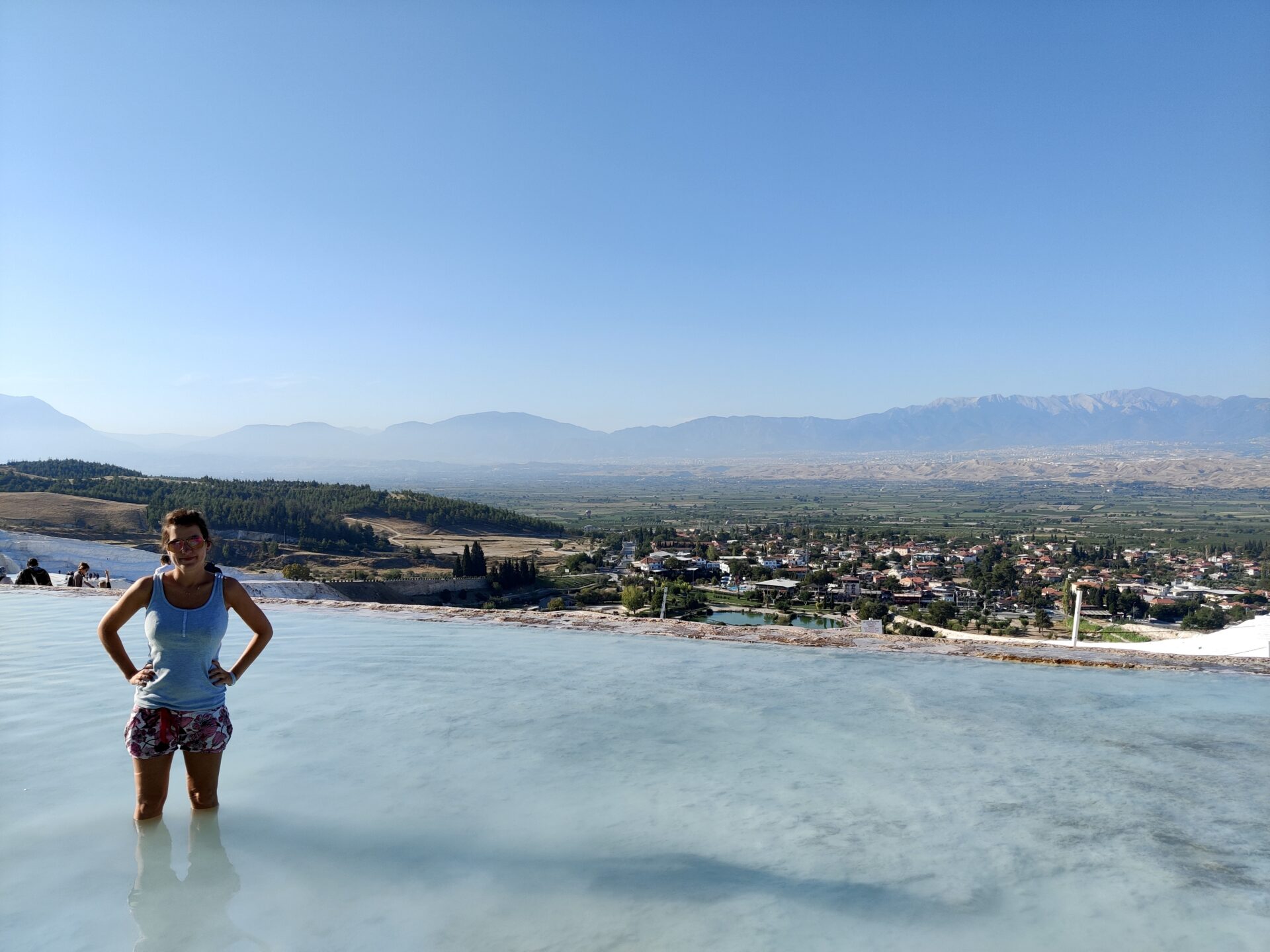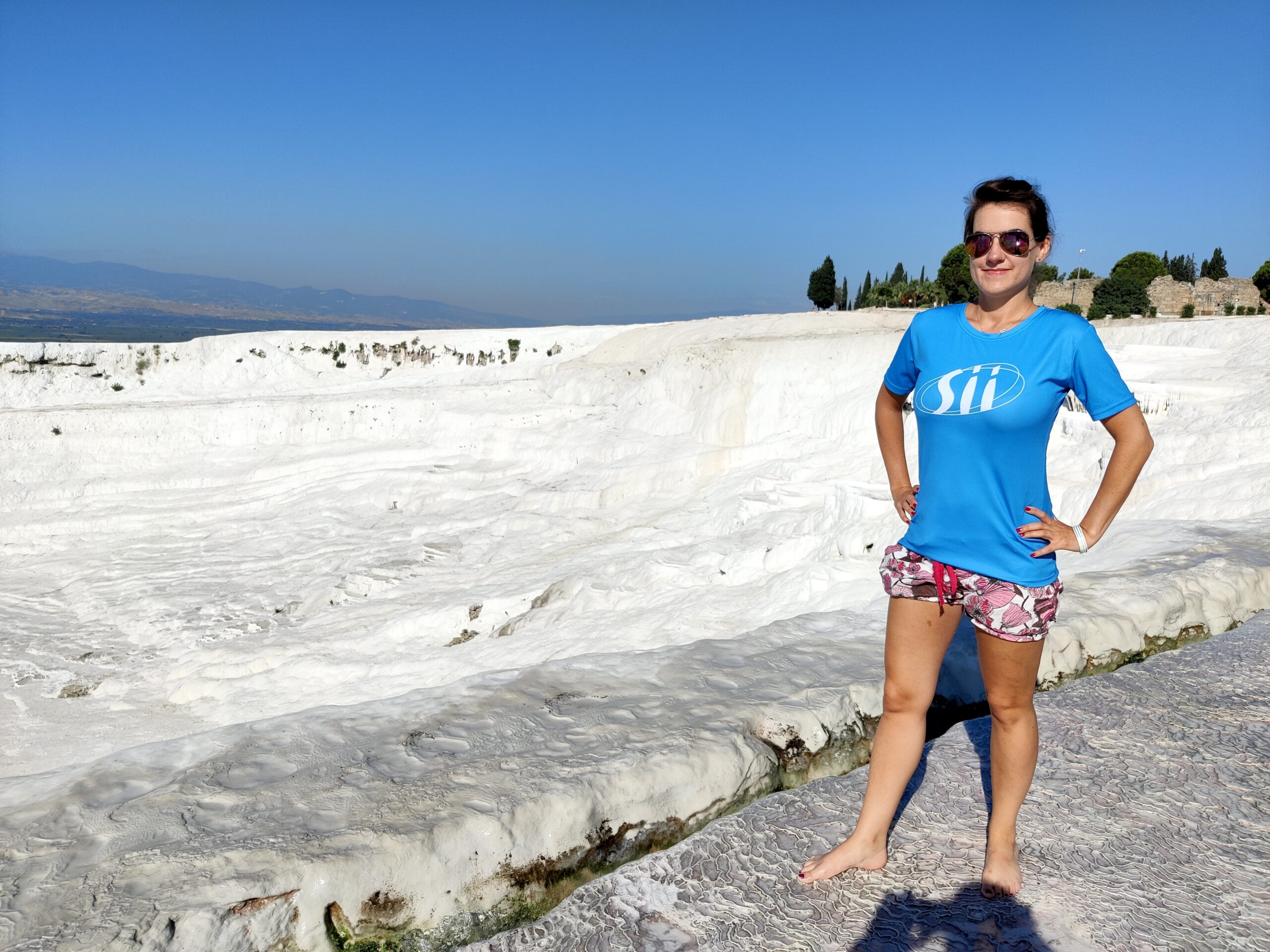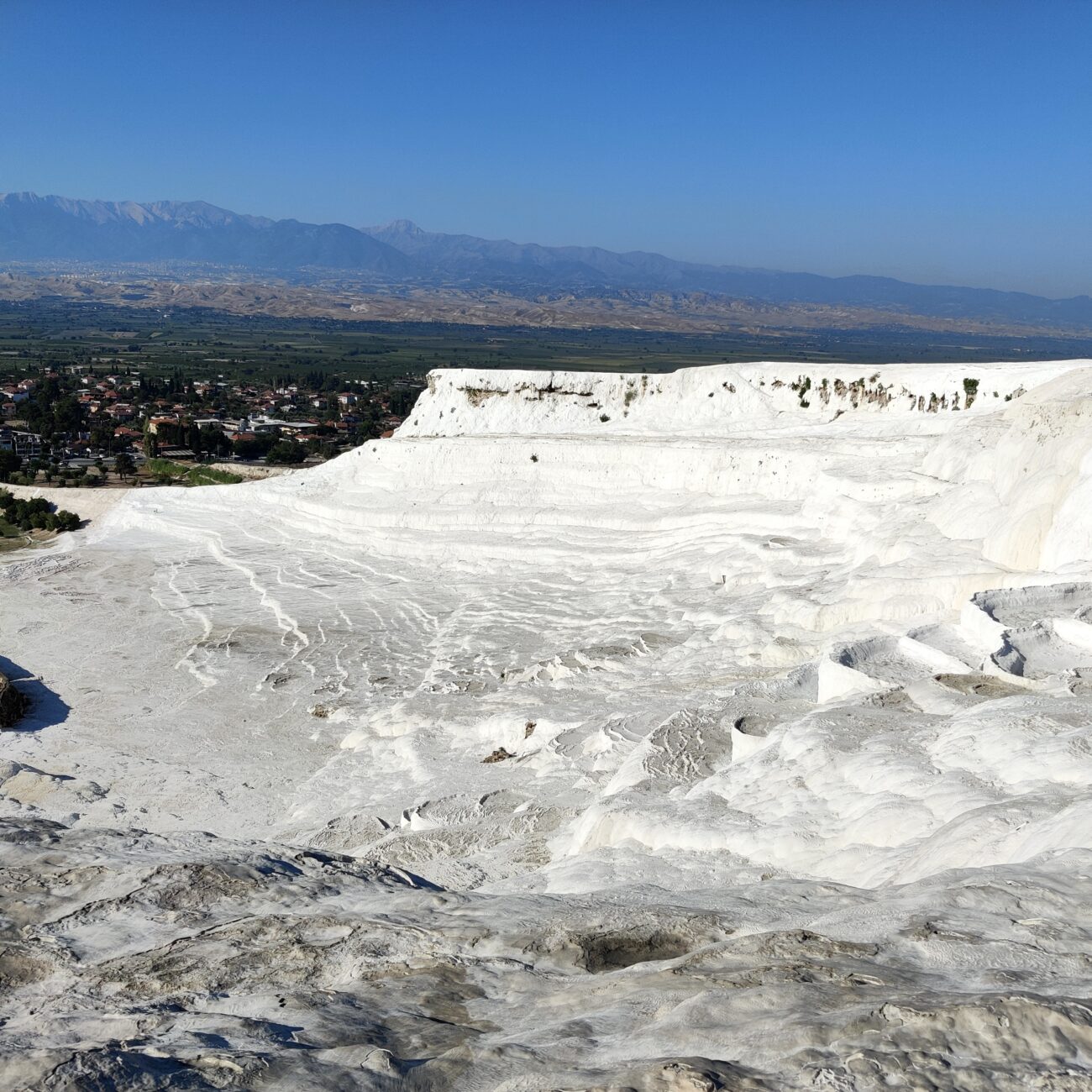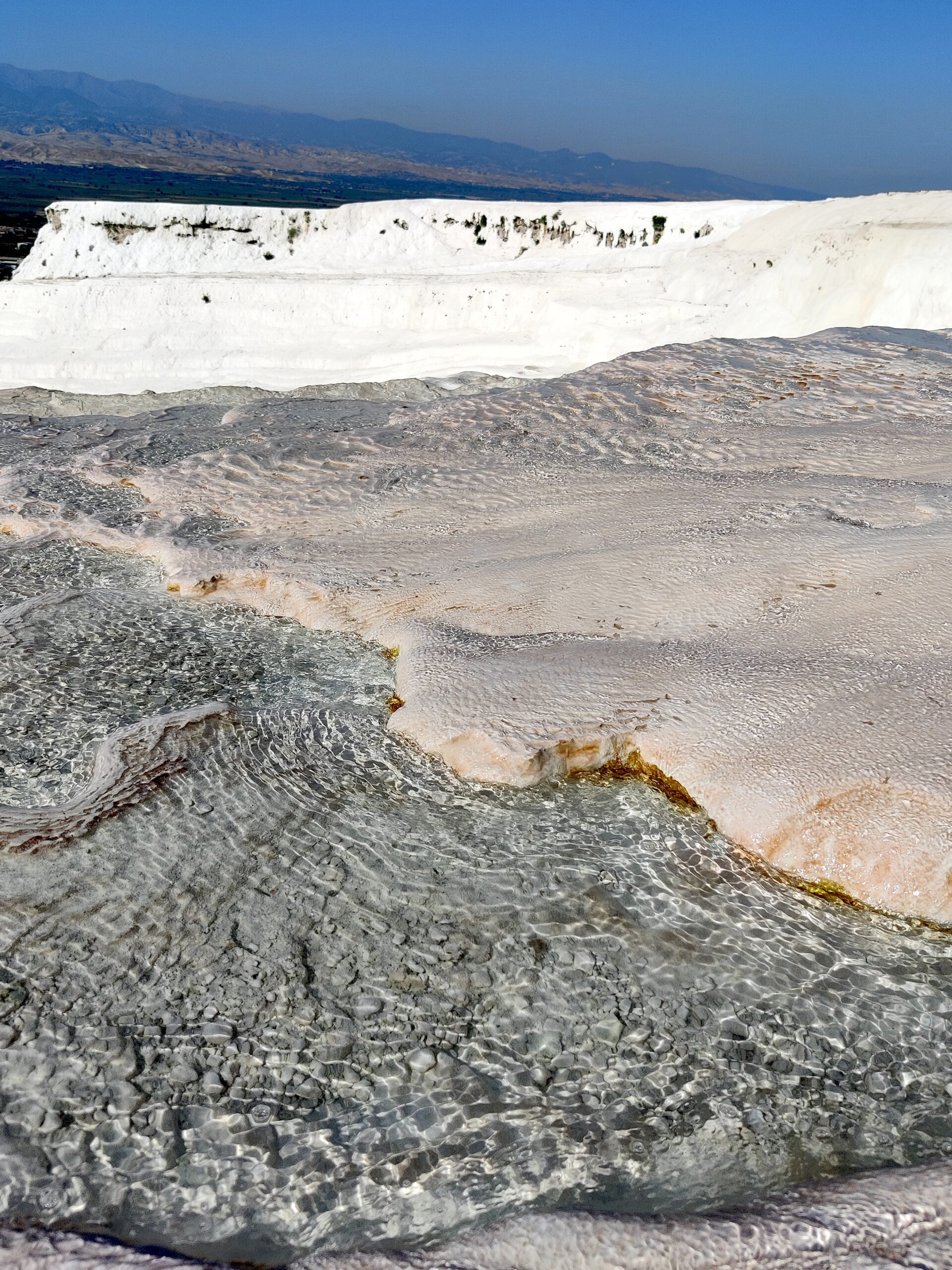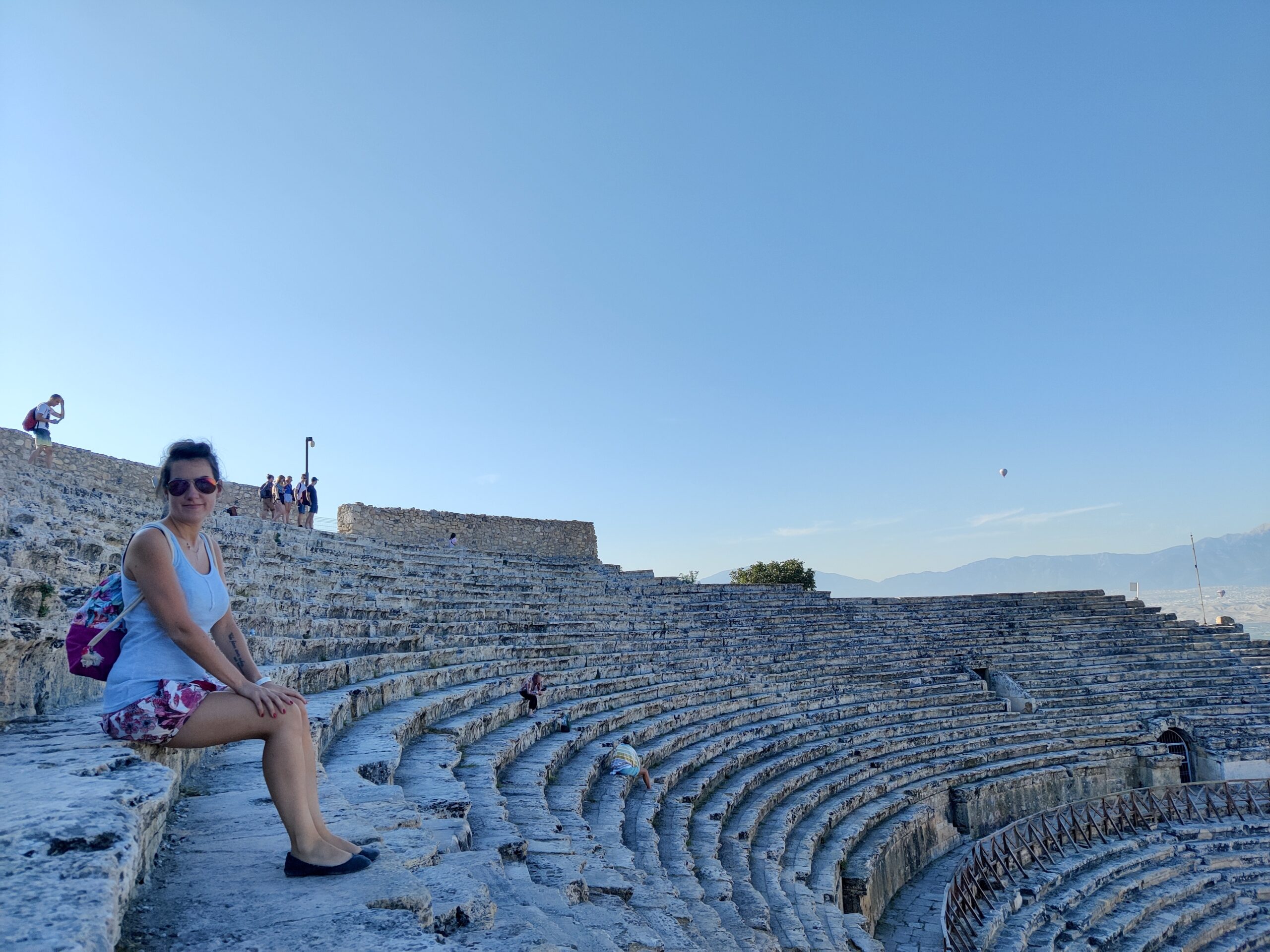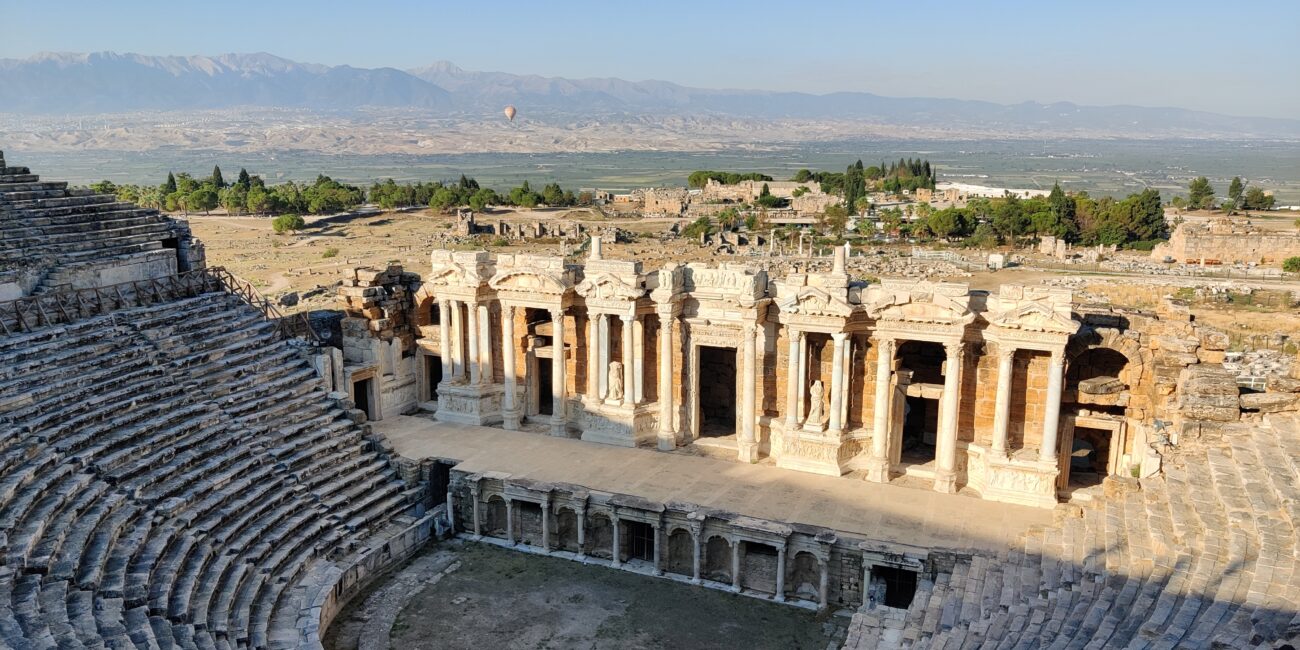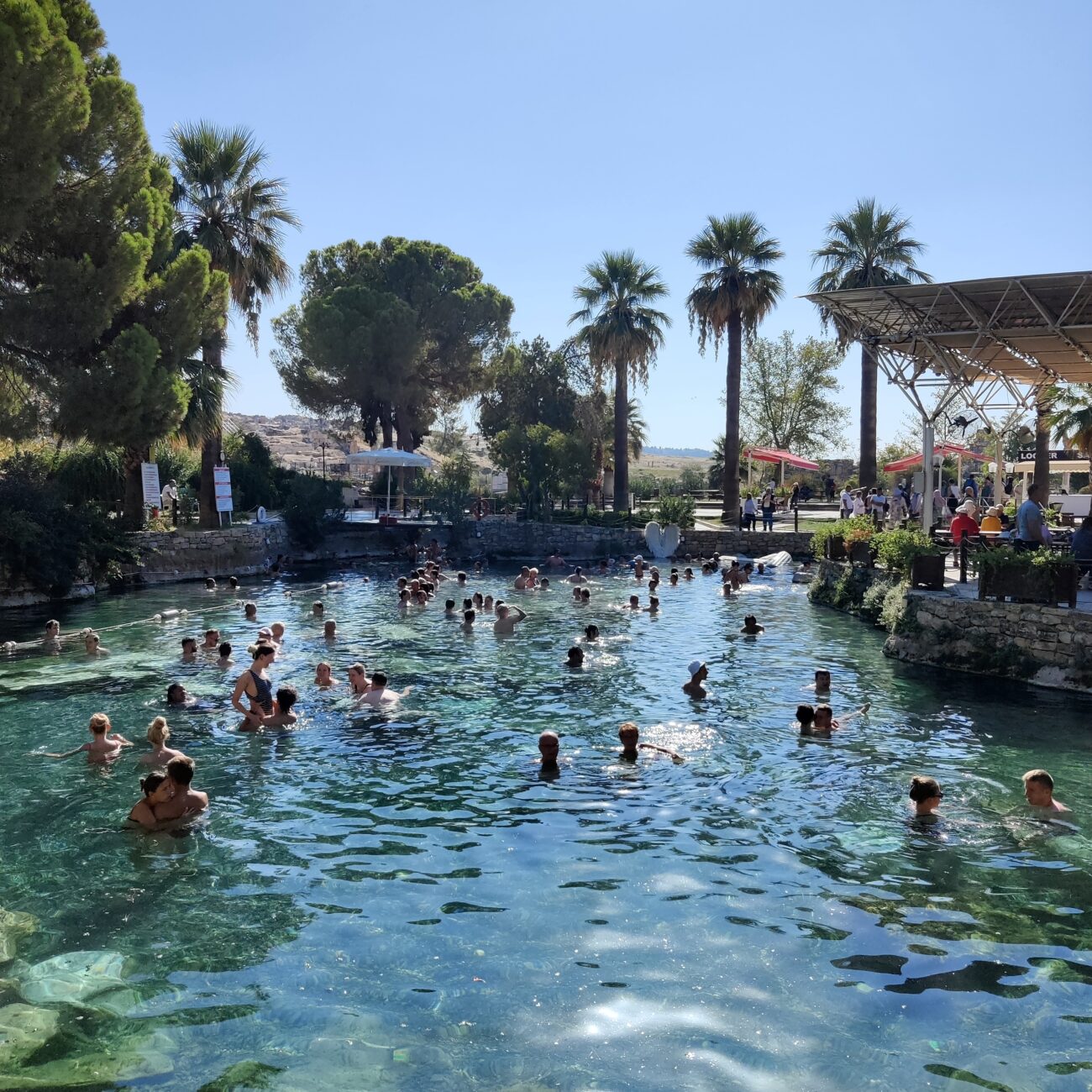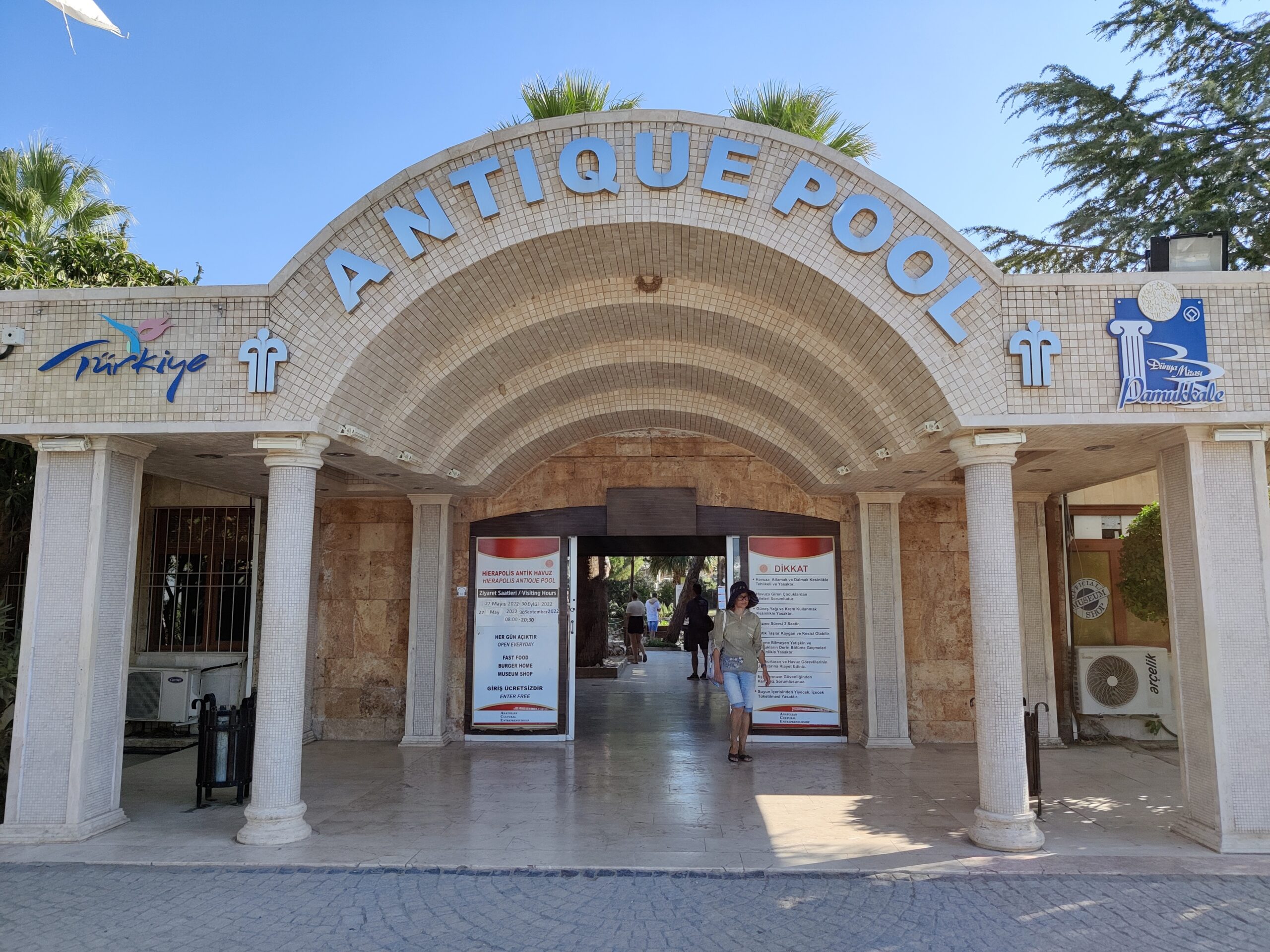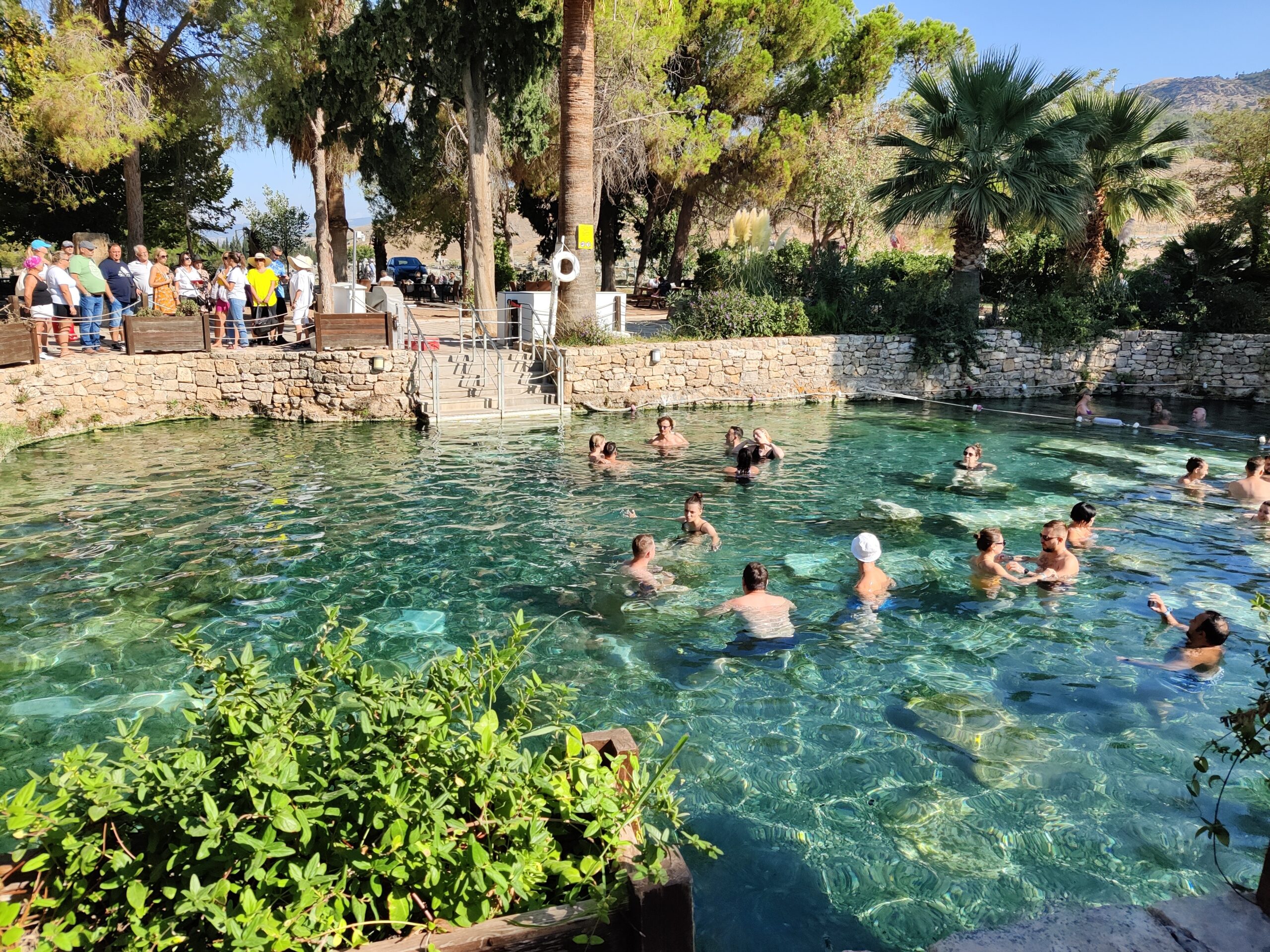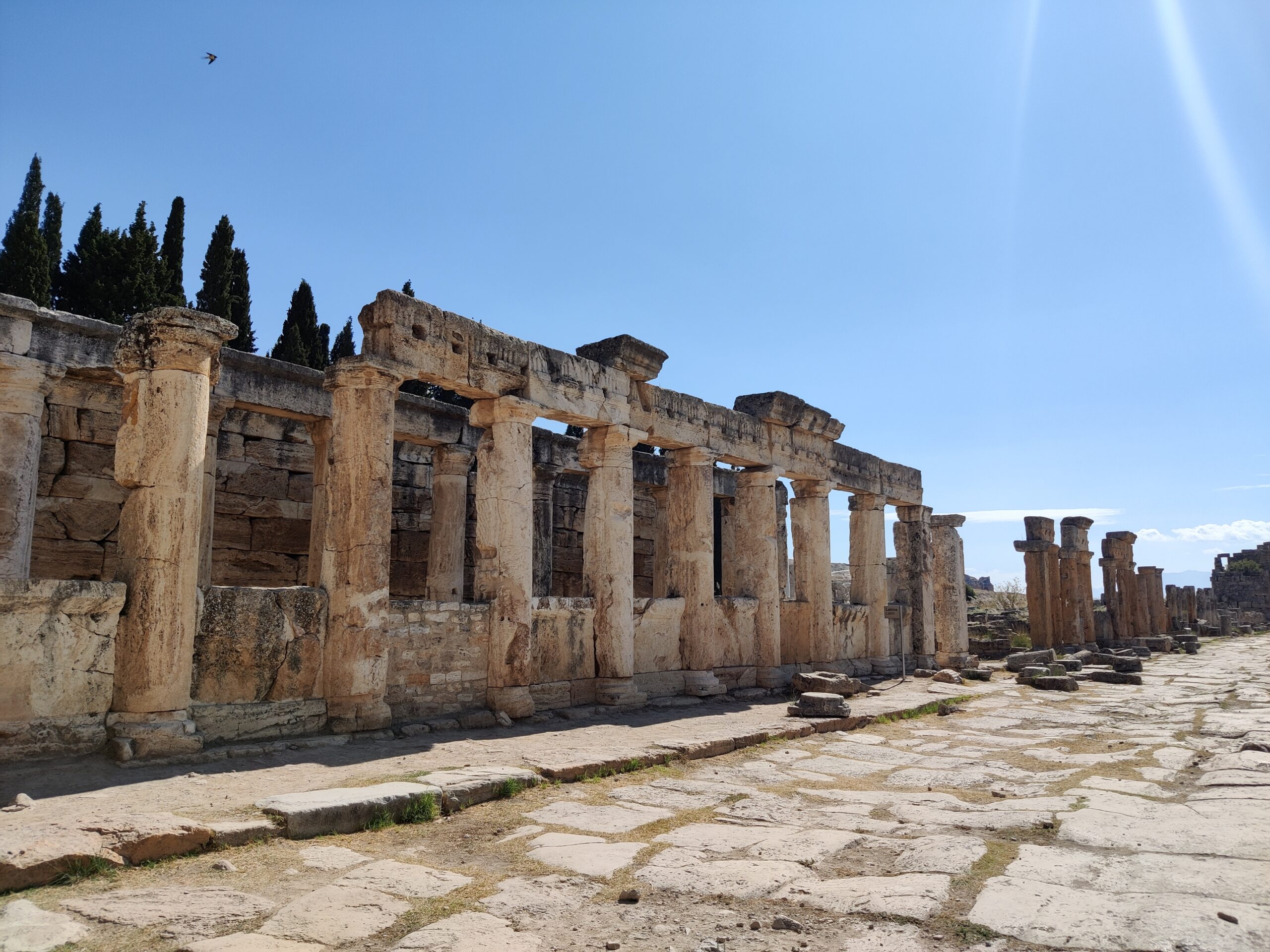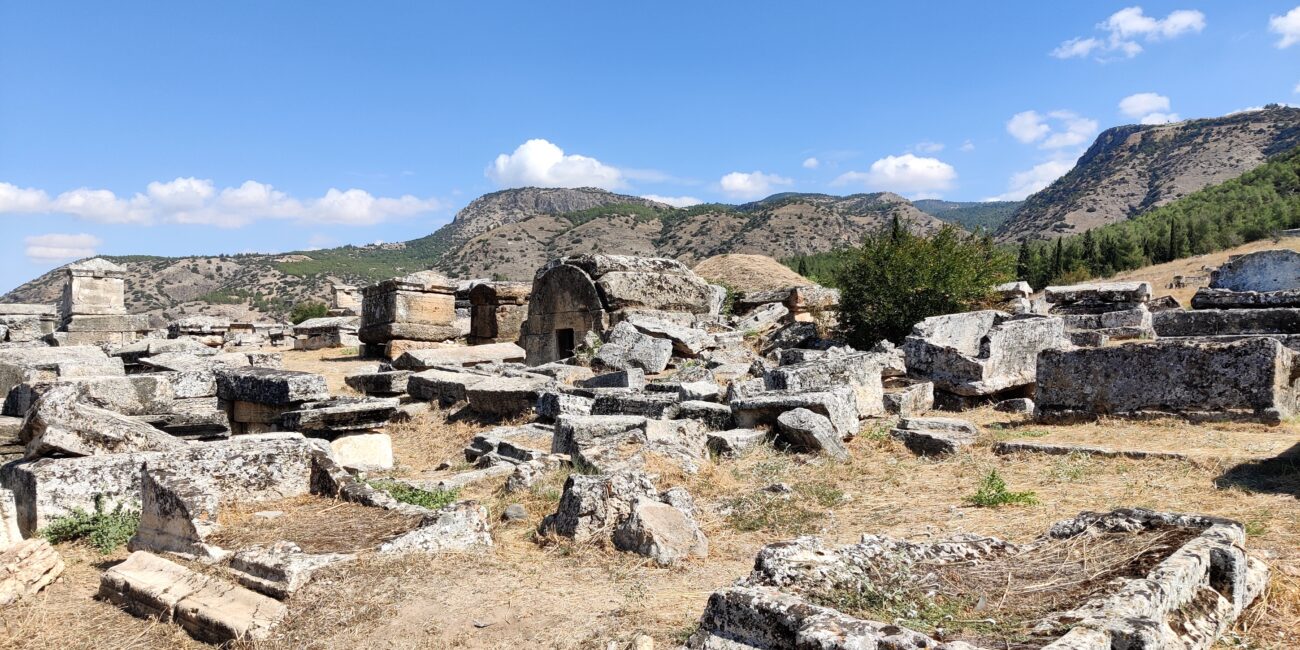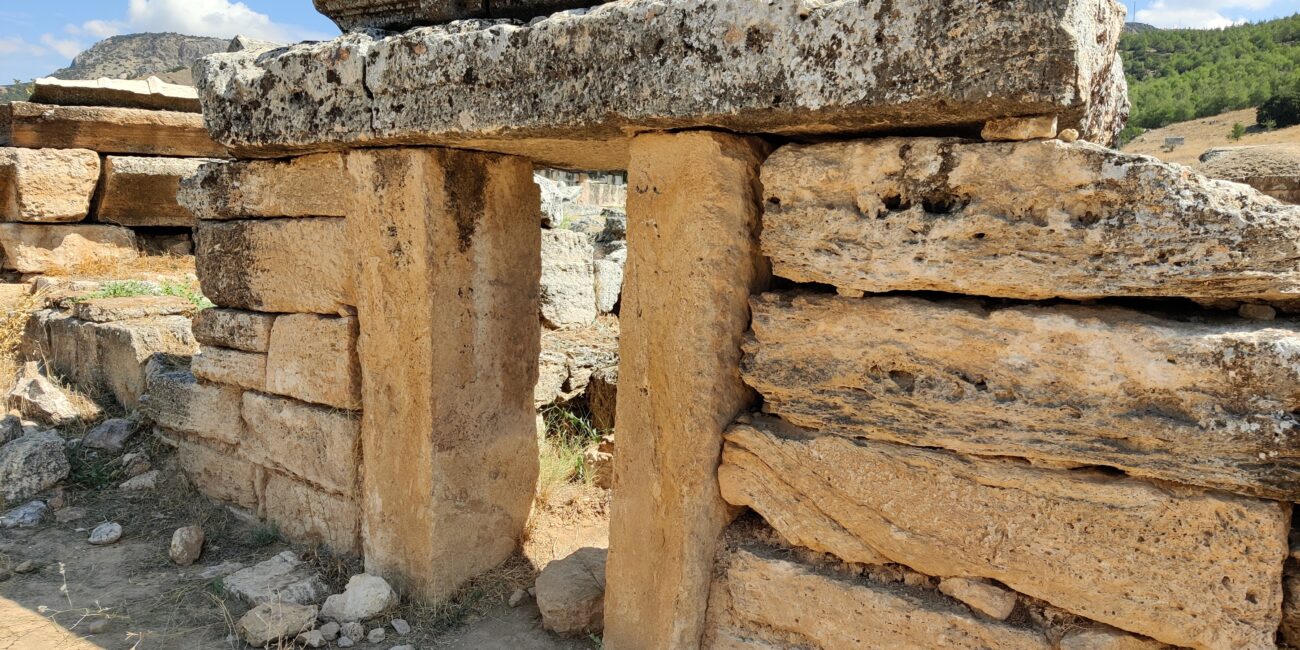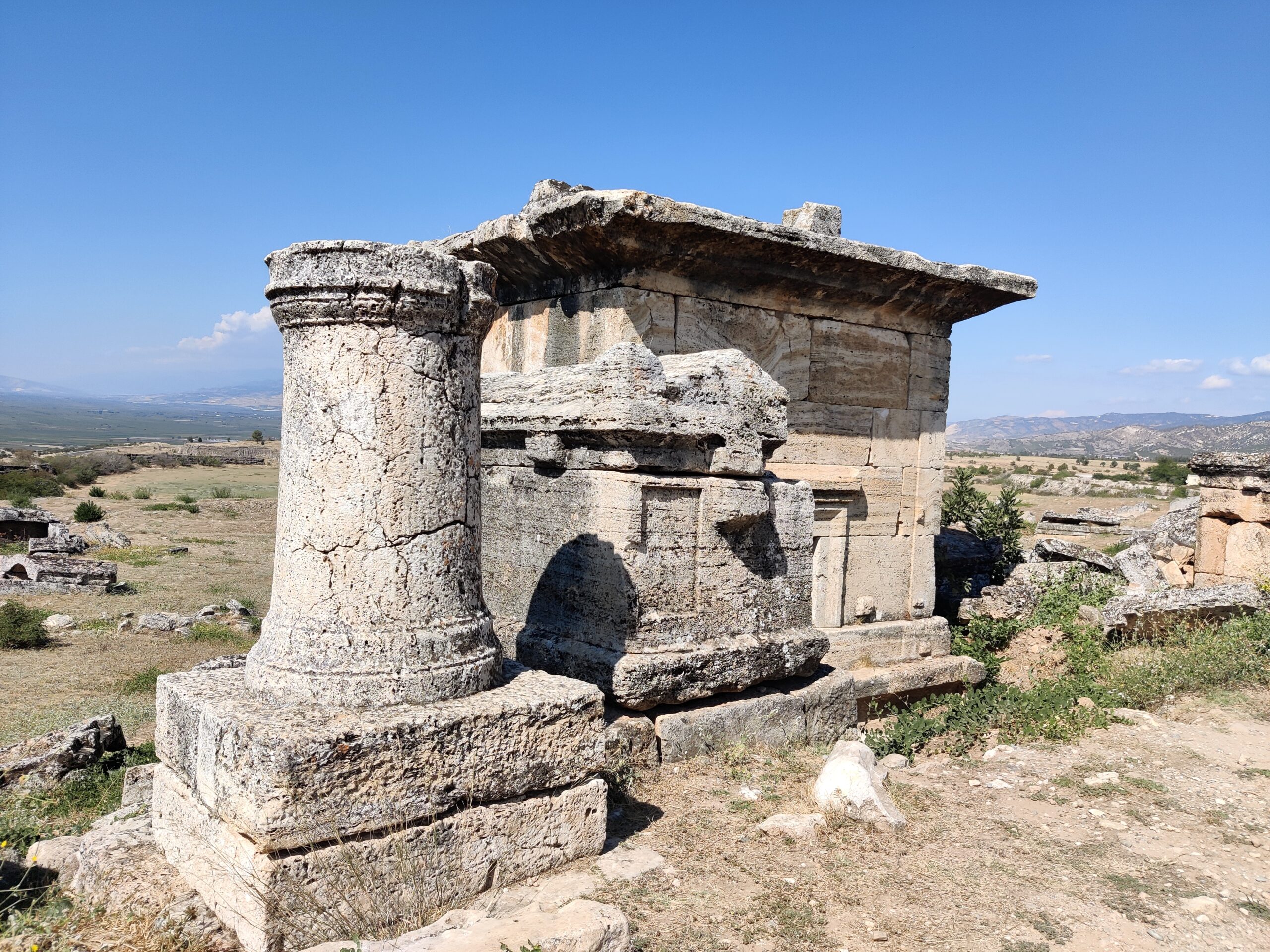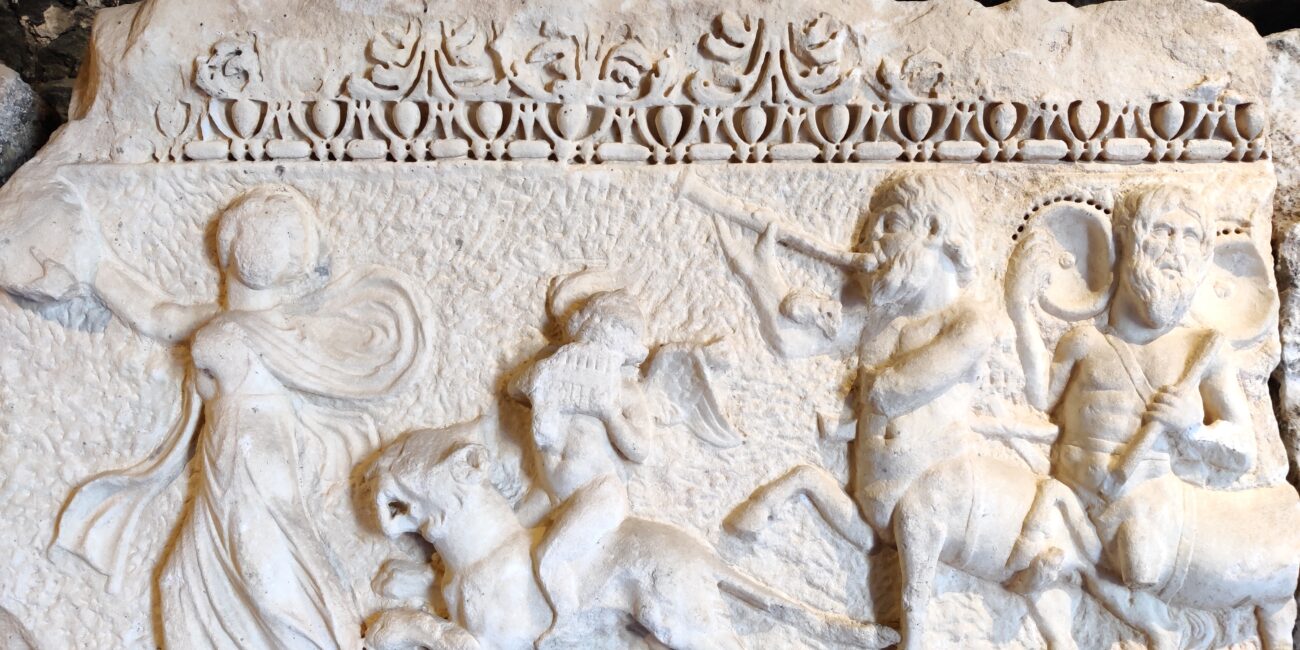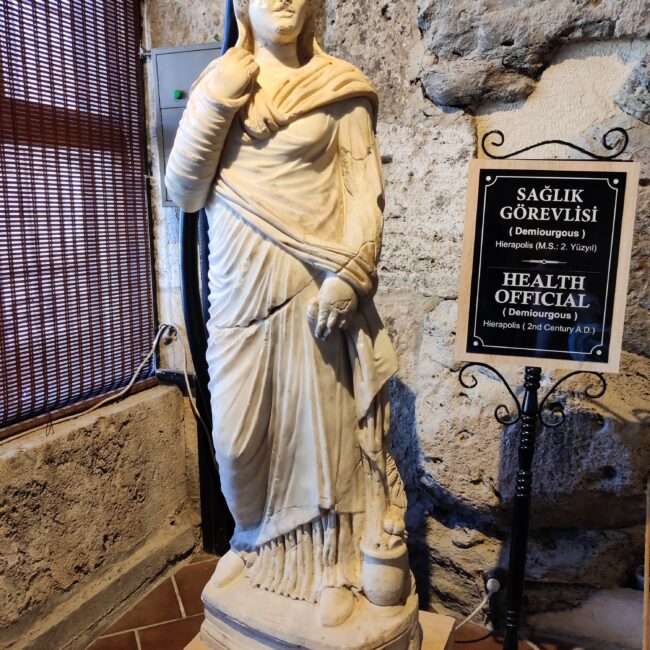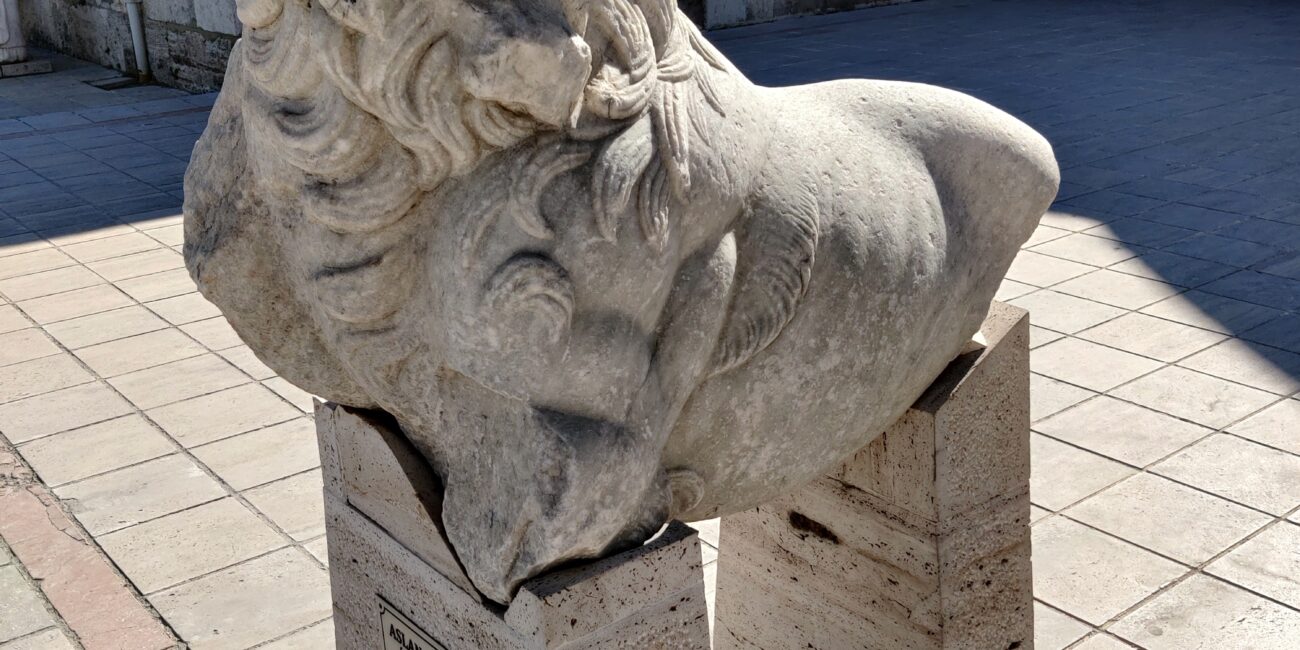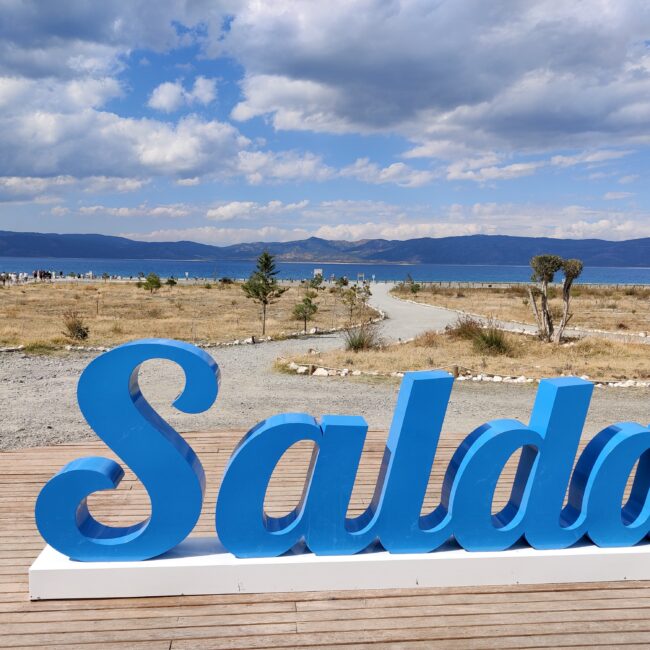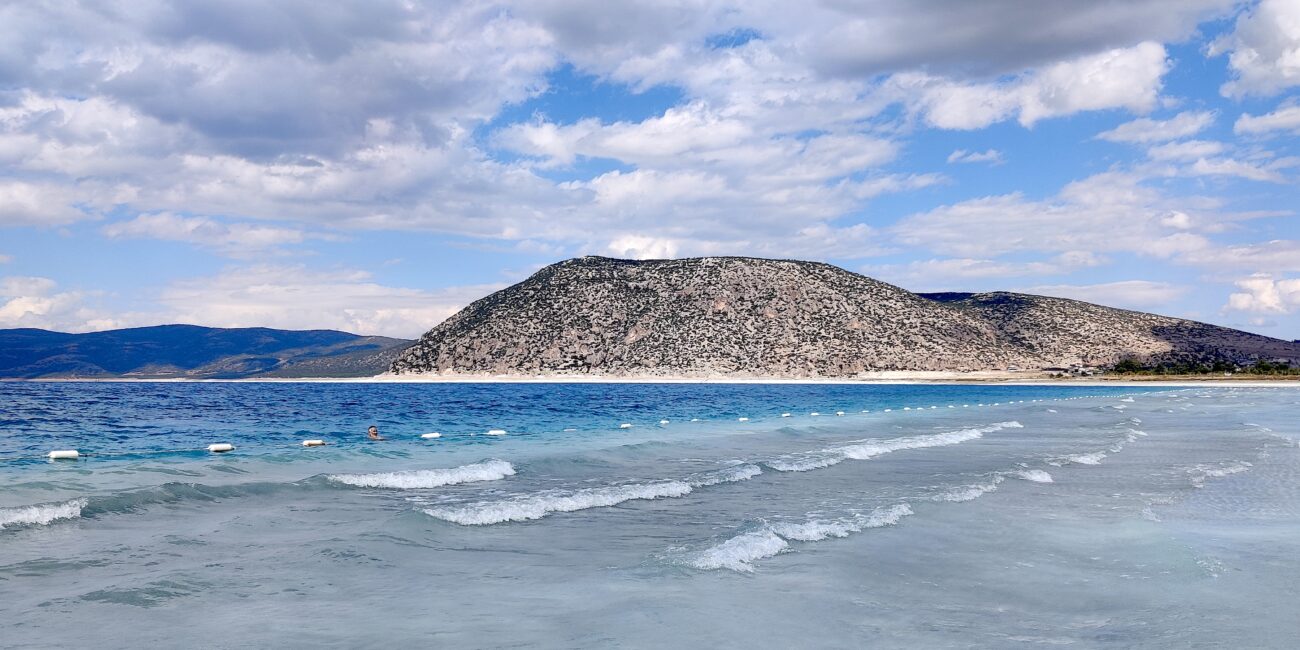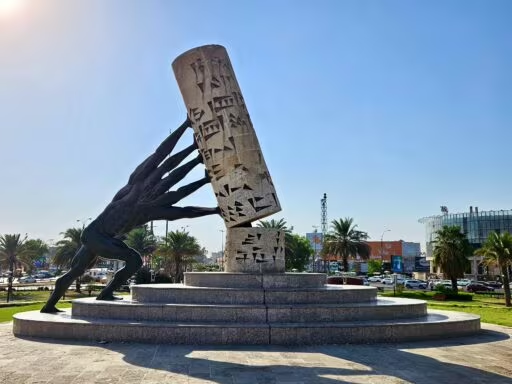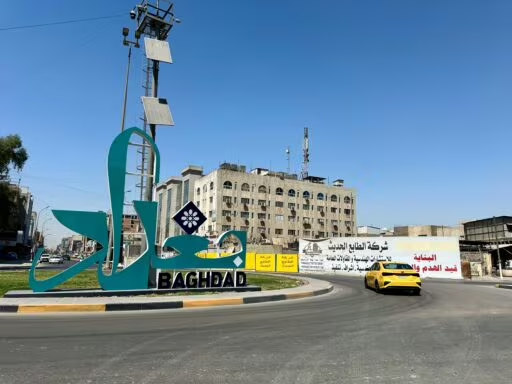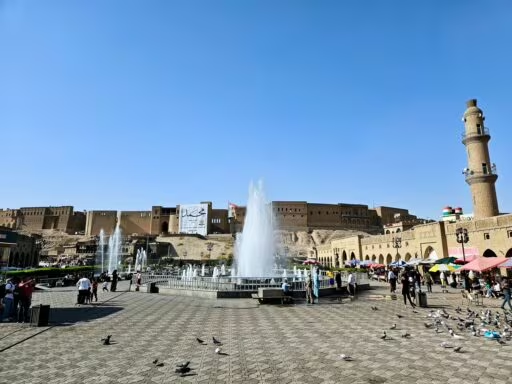This post is also available in:
Polski
Hello! 👋
Today’s post is about my journey to Pamukkale in 2022. Although I visited as part of an organized tour, I had the chance to see some unforgettable places. The travertine terraces, Hierapolis, and a few other gems – all of these made Pamukkale a destination worth exploring. I’ll share what’s worth seeing here and what you can expect during your visit.
Pamukkale
Pamukkale, often called the “Cotton Castle,” is one of Turkey’s most iconic landmarks. Its stunning white travertine terraces, shaped over thousands of years by calcium-rich thermal springs, create a truly breathtaking landscape.
This site’s history dates back to the 2nd century BCE, when the ancient city of Hierapolis was established on the travertine formations. Known for the healing powers of its thermal springs, the city attracted visitors from around the world seeking wellness. During the Roman era, Hierapolis became a major spa center, where physicians used the thermal waters to treat patients.
Over time, the large number of tourists visiting Pamukkale has left its mark on this unique location. In the past, visitors were free to bathe in the natural pools. However, to preserve the site, the Turkish government and UNESCO have since prohibited such activities.
When exploring the terraces today, visitors must walk barefoot to protect the delicate formations. It’s worth noting that the wet surface can be slippery, so caution is necessary. Water shoes can be a good option, as they provide better grip and protect your feet. These lightweight, non-slip shoes, often used for navigating rocky beaches, are a practical choice for a safe visit.
Despite these minor inconveniences, Pamukkale is undoubtedly worth a visit. Its unique scenery and fascinating history, highlighted by the ancient city of Hierapolis, make it a truly unforgettable destination.
👉 For more information, visit the official website.
Hierapolis ancient theater
The theater in Hierapolis is a remarkable structure dating back to the 2nd century CE. Built during Emperor Hadrian’s reign, it was part of the city’s reconstruction following an earthquake in 60 CE. The theater’s façade spans an impressive 91 meters, and its seating area (cavea) could hold up to 15,000 spectators. The design was well-thought-out, with a central corridor (diazoma) dividing the seating into two levels. The cavea included 50 rows of seats, organized into seven sections separated by eight staircases.
A pivotal moment in the theater’s history came in the early 3rd century CE during the reign of Septimius Severus. During this period, the original scaenae frons was replaced with a grander, more monumental structure. This new façade featured three tiers, lavishly decorated with sculptures of mythological themes. The limestone seating was upgraded to marble, and the podium surrounding the orchestra was elevated, enabling the theater to host events such as gladiatorial games and wild animal hunts.
In the 7th century CE, another devastating earthquake led to the theater’s abandonment, leaving it in ruins for centuries. By the 18th century, however, it began to draw the interest of European travelers. Between 2004 and 2014, extensive restoration efforts brought the theater back to life. Today, visitors can admire it in nearly its original splendor, a testament to the architectural achievements of the ancient world.
👉 For more information, visit the official website.
Cleopatra Antique Pools
The Cleopatra Pool, also known as the Antique Pool or Pamukkale Pool, is a historic site located in the ancient city of Hierapolis. According to legend, this pool was a gift from Mark Antony to Cleopatra, although there is no concrete evidence that the Egyptian queen ever visited it.
In the 7th century CE, an earthquake destroyed the surrounding structures, causing marble columns to collapse into the pool, where they remain to this day. Today, visitors can swim among these ancient ruins, making it a truly unique experience on a global scale.
The water in the pool maintains a temperature of approximately 36°C and is rich in minerals such as calcium, magnesium, and sulfates, which give it therapeutic properties. Bathing in these waters is believed to benefit conditions such as rheumatism, skin ailments, and circulatory problems.
While a dip in this historic pool sounds tempting, I personally decided not to take part. Unfortunately, the sheer number of tourists at the time made it difficult to imagine a relaxing experience. Nevertheless, simply seeing the site and imagining its former grandeur was more than satisfying for me. If you’re planning a visit, I recommend going during less crowded times to fully enjoy the unique atmosphere of this remarkable place.
Necropolis of Hierapolis
The necropolis in Hierapolis is one of Turkey’s largest and best-preserved ancient cemeteries. Known as the “City of the Dead”, it stretches over two kilometers and houses around 1,200 tombs, dating from the late Hellenistic period to the early Christian era.
The diverse range of burial structures reflects the variety of traditions and the socio-economic status of the people who lived in Hierapolis. Simple graves for commoners stand alongside elaborate family mausoleums that resemble small temples. Many sarcophagi feature intricate reliefs and Greek inscriptions, offering valuable insights into the professions and lives of those interred.
The necropolis is divided into three main sections: northern, eastern, and southern. The northern necropolis, one of the largest ancient cemeteries in modern-day Turkey, served as a burial site for both Hierapolis residents and visitors who came to the city seeking the healing properties of its thermal springs.
As you walk through the necropolis, you’ll notice a captivating variety of architectural styles, showcasing the evolution of burial practices over the centuries. The numerous inscriptions and decorative details on the tombs provide archaeologists and historians with an invaluable glimpse into the social and cultural life of ancient Hierapolis.
👉 For more information, visit the official website.
Hierapolis Archaeological Museum
The Archaeological Museum in Hierapolis, located within the ancient city of Hierapolis, is a treasure trove of history and unique artifacts. Covering an area of 14,000 square meters, it is housed in a restored complex of Roman baths, a gymnasium, and a library—an architectural relic that is a remarkable attraction in its own right.
The museum’s exhibition is carefully divided into three main halls, each offering something unique:
- Gallery of Tombs and Statues: This section showcases impressive discoveries from Hierapolis and Laodicea, including sarcophagi, statues, tombstones, pedestals, columns, and inscriptions. These artifacts provide valuable insights into the lives and beliefs of the ancient city’s inhabitants.
- Gallery of Small Artifacts: If you’re intrigued by small yet highly valuable discoveries, this hall will not disappoint. Here, you’ll find figurines, pottery, seals, and stone tools dating back over 4,000 years, offering a glimpse into the daily lives of ancient civilizations.
- Theatrical Gallery: A true delight for enthusiasts of architecture and theatrical art. This gallery features decorative architectural elements from the theater in Hierapolis, including reliefs depicting myths about Apollo and Artemis, scenes from the life of Dionysus, and the coronation of Emperor Septimius Severus.
👉 For more information, visit the official website.
Lake Salda
Lake Salda, often called the “Turkish Maldives”, is located in southwestern Turkey, within the Burdur province. It lies approximately 110 km west of Denizli and 150 km north of Antalya. This stunning lake spans an area of about 45 square kilometers and reaches a depth of 184 meters, making it one of the deepest and cleanest lakes in Turkey.
What sets Lake Salda apart are its striking turquoise waters and white sandy beaches, created by deposits of the mineral hydromagnesite. Adding to its charm, the lake sits at an altitude of about 1,200 meters above sea level, giving the area a cooler climate than the Mediterranean coast. This makes it an ideal retreat from the summer heat.
If you’re visiting Pamukkale, a trip to Lake Salda is well worth considering. The two destinations are only about 110 km apart, making for an easy 1.5-hour drive. Their proximity makes Lake Salda a great addition to a day of sightseeing. To fully enjoy your visit, keeping a flexible travel plan is advisable—it allows for spontaneous detours and makes exploring this beautiful region even more rewarding.
Summary
In conclusion, Pamukkale is a destination of extraordinary natural beauty, but its popularity has come at a cost. The impact of mass tourism is increasingly visible: the terraces are losing their pristine form, and the natural environment is struggling to cope with the high volume of visitors.
To safeguard this unique site, Turkish authorities have taken significant measures. In the 1980s, hotels located on the terraces were removed due to their detrimental effects on the thermal springs and travertines. Additionally, in 1997, the tourist path through the natural terraces was closed and replaced with an alternative route along an artificial channel. Pamukkale and Hierapolis were also designated as a UNESCO World Heritage Site in 1988, underscoring the need to preserve their global significance.
By keeping these efforts in mind and respecting local guidelines, visitors can contribute to protecting Pamukkale for generations to come. It serves as a powerful reminder that nature’s beauty is both fragile and deserving of our care.

